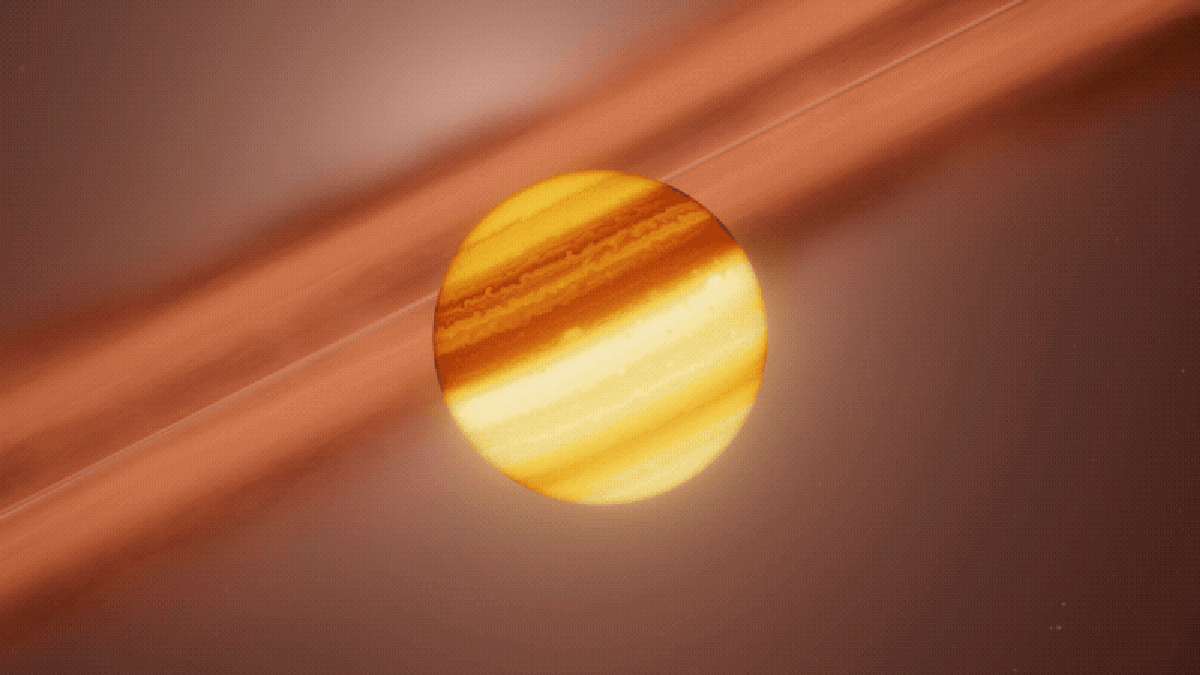
قبل عامين ، اكتشف علماء الفلك قرصًا كوكبيًا ظاهريًا حول كوكب خارج نظامنا الشمسي ، لكنهم لم يكونوا متأكدين. تظهر ملاحظات المتابعة الآن أنهم كانوا على حق ، في اكتشاف يمكن أن يحسن فهمنا للأقمار الخارجية وكيف تتشكل في أنظمة النجوم الناشئة.
يحتوي Protoplanet PDS70c على قرص كوكبي ، وفقًا للجديد ابحاث نُشرت في مجلة Astrophysical Journal Letters. يعتقد العلماء بنفس القدر في ابحاث نُشر منذ عامين ، لكنهم لم يتمكنوا من تمييز القرص عن البيئة المحيطة به ، مما أدى إلى الشك. كانت ملاحظات المتابعة التي أجراها مصفوفة أتاكاما الكبيرة المليمترية / ما دون المليمتر (ALMA) في تشيلي أساسية في التأكيد.
أوضحت عالمة الفلك ميريام بنيستي في بيان: “تم الحصول على ملاحظات ALMA الخاصة بنا بدقة رائعة بحيث يمكننا تحديد بوضوح أن القرص مرتبط بالكوكب وأننا قادرون على تقييد حجمه لأول مرة”. Benisty ، الذي قاد الدراسة ، باحث في جامعة غرونوبل بفرنسا وجامعة تشيلي.

من خلال مراقبة النظام في ضوء المليمتر (الطول الموجي المتوقف بين الميكروويف وجزء الأشعة تحت الحمراء من الطيف) ، تمكن الفريق من تأكيد وجود كميات وفيرة من الغبار في مدار حول PDS70c. إذا كان القرص موجودًا في نظامنا الشمسي ، فسوف يمتد من مركز الشمس إلى مسافة أبعد قليلاً من مدار الأرض.
This Jupiter-like protoplanet, along with its equally gigantic sibling, PDS70b, is in orbit around a young, 5-million-year-old star located 370 light-years from Earth. The star itself hosts a circumstellar disk, within which the two protoplanets are sucking up material, resulting in pockets, or cavities, around them. Both PDS70b and PDS70c are gas giants, and both are far from their host star, at distances of 22 AU and 34 AU, respectively. By comparison, Neptune is 30 AU from our Sun, with 1 AU being the average distance of Earth to the Sun.
The circumplanetary disk around PDS70c is roughly 500 times larger than Saturn’s rings, and, as the new paper points out, the amount of mass in this disk could form up to three exomoons the size of our own Moon.

Interestingly, the new research rules out a circumplanetary disk around PDS70b. The scientists say its greedy sibling, PDS70c, is not a good sharer, and that it gobbled up the requisite building material for itself.
“This system,” according to Stefano Facchini, a co-author of the paper and a research fellow at the European Southern Observatory, “offers us a unique opportunity to observe and study the processes of planet and satellite formation.”
Indeed, the confirmation of a circumplanetary disk around PDS70c could add new clarity to ongoing theories about exomoons and how they form. In one possible scenario, protoplanets steal mass from the surrounding circumstellar disk, and the resulting blobs of mass fall onto the forming planet. But some bits of matter stay in orbit, clumping together to form natural satellites.
It’s an exciting finding, but the team is not done with the PDS70 system quite yet. They’re already looking forward to the ESO’s Extremely Large Telescope, which is currently being built in Chile’s Atacama desert. Using this tool, the astronomers are hoping to acquire even higher resolution scans of the system and build three-dimensional views showing gas moving through the circumplanetary disk.

“هواة الإنترنت المتواضعين بشكل يثير الغضب. مثيري الشغب فخور. عاشق الويب. رجل أعمال. محامي الموسيقى الحائز على جوائز.”
